- Home
- Peter Ackroyd
London: The Biography Page 13
London: The Biography Read online
Page 13
Another aspect of the proclamation is also of some significance, in that passage where the monarch and her city advisers prohibit “any more families than one only to be placed, or to inhabit from henceforth in any house that hereto fore hath been inhabited.” The idea of one family occupying one house was indeed the stated purpose behind much of the city’s development in the seventeenth and eighteenth centuries; it has even been considered a peculiarly London solution. It is peculiar to the city because it is historical in spirit; as S.E. Rasmussen put it in London: The Unique City, the Elizabethan remedy represented a “conservative clinging to the medieval form of housing.” In a similar spirit new building was only allowed if it were raised “on old foundations.” Here we have an inkling of that continuity, and sense of permanence, which London still exemplifies.
It did not, however, work. Within three years of Elizabeth’s proclamations the city authorities were lamenting the continual increase in sheds, lodgings and tenements outside the walls. There were further edicts and orders issued at regular intervals throughout the reign of her successors; none of them was ever obeyed, and none of them was in the least successful at controlling the growth of the city.
The truth is that the growth of London could not, and cannot, be controlled. It spread to the east along the high street of Whitechapel, and to the west along the Strand. It spread north to Clerkenwell and Hoxton; to the south, Southwark and its environs became “pestered,” to use Stow’s word, with places of popular resort, taverns, brothels, pleasure grounds and theatres. In turn the Inns of Court, clustered in the “suburbs” of Holborn between the city and the royal palaces of Westminster, were extended and embellished.
Yet the quality of transport from suburb to city was not always of the best. In the latter years of the reign of Henry VIII the high road between the Temple “and the village of Charing,” now known as the Strand, was noted in the Rolls of Parliament to be “full of pits and sloughs, very perilous … very noyous and foul, and in many places thereof very jeopardous to all people passing and repassing, as well on horseback as on foot.” More modern forms of transportation, however, were not necessarily welcomed. The introduction of hackney coaches, known as “chariots” or “whirlicotes,” led Stow to reflect that “the world runs on wheels with many whose parents were glad to go on foot.”
The state of traffic in the capital was a source of constant complaint in the sixteenth century, as it has become for each generation. Stow again noted “the number of cars, drays, carts and coaches, more than hath been accustomed, the streets and lanes being straitened, must needs be dangerous, as daily experience proveth”-dangers not tempered when coachmen lashed their horses forward without checking what was behind them and inebriated drivers quarrelled frequently and violently in the street over who had right of passage. And there was the noise “where even the very earth quakes and trembles, the casements shatter, tatter, and clatter.”
There was, however, a significant improvement in the conditions of urban living at least for those who could afford the new “luxuries” of city life. There were pillows and bedding where there had once lain a log and a straw pallet; even the poorer citizens dined off pewter rather than wood and the “middling” households might boast of wall-coverings, brass, soft linen, cupboards garnished with plate, jars and pots made from green glazed earthenware. There was also a fashion for brick and stone chimneys, which in turn had an effect both upon the appearance and atmosphere of London.
The city had forfeited some of its independence to Parliament and to the sovereign, even to the extent of accepting Henry VIII’s recommendations for the mayoralty, but in turn it had become the recognised capital of a unified nation. The municipal ideal had been displaced by a national ideal-and how could it not be so in a city which was now largely populated by immigrants? The new arrivals came from every area of England, Cornwall to Cumberland (it has been estimated that one-sixth of all Englishmen became Londoners in the second half of the sixteenth century), and the number of foreign immigrants rose at an accelerating pace, making the city truly cosmopolitan. So high was the mortality, and so low the birth rate, that without this influx of traders and workers the population would in fact have steadily declined. Yet instead it continued to expand, with brewers and book-binders from the Low Countries, tailors and embroiderers from France, gun-makers and dyers from Italy, weavers from the Netherlands and elsewhere. There was an African or “Moor” in Cheapside who made steel needles without ever imparting the secret of his craft. Fashion followed population, just as the populace followed fashion. In the reign of Elizabeth I (1558-1603) there was a surfeit of silk shops, selling everything from gold thread to silk stockings, and at the time of her accession it was reported that no country gentleman could “be content to have eyther cappe, coat, doublet, hose or shirt … but they must have their geare from London.”
If London had become the centre of fashion, it had also become the centre of death. Mortality was higher than in any other part of the country, the two great harvesters being the plague and the sweating sickness. In poorer parishes life expectancy was only between twenty and twenty-five years, while in the richer it rose to thirty or thirty-five years. These fatal infections confirm the evident truth that sixteenth-century London remained a city of the young. The greatest proportion of the citizens were under the age of thirty, and it is this actuarial statistic which helps to explain the energy and restlessness of urban life in all its forms.
The most striking example comes from within the turbulent body of the apprentices, a peculiarly London phenomenon of young men who were bound by strict articles of agreement and yet managed to retain a high-spiritedness and almost feverish buoyancy which spilled over into the streets. They “wold ether bee at the taverne, filling their heads with wine, or at the Dagger in Cheapeside cramming their bellies with minced pyes; but above al other times it was their common costome, as London prentises use, to follow their maisters upon Sundays to the Church dore and then to leave them, and hie unto the taverne.” There are reports of various fights and “affrays,” the common victims being foreigners, “night-walkers,” or the servants of noblemen who were considered to take on the airs of their superiors. A declaration, in 1576, warned apprentices not to “misuse, molest, or evil treat any servant, page, or lackey of any nobleman, gentleman, or other going in the streets.” There were often disturbances after football matches and three young men were put in the local prison for “outrageously and riotously behaving themselves at a football play in Cheapside.” But drunken high spirits could turn into something more violent, and threatening. Apprentices as well as artisans and children took part in the “evil May-day” riots of 1517, in which the houses of foreigners were ransacked. In the last decade of the sixteenth century there were still more outbreaks of riot and disorder but, unlike other continental cities, London never became unstable or ungovernable.
The accounts of foreign travellers suggest the unique status of London in this period. A Greek visitor reported that the treasures in the Tower were “said to exceed the anciently famed wealth of Croesus and Midas,” while a Swiss medical student reported that “London is not said to be in England, but rather England to be in London.” There was a standard guided tour for visitors, who were first taken to the Tower and the Royal Exchange before being escorted to the west, with Cheapside, St. Paul’s, Ludgate and the Strand viewed, before a magnificent arrival at Westminster and Whitehall. The roads were unpaved in parts, but a journey on horse was still sometimes preferable to that upon the Thames. Giordano Bruno, spy and magician, has left a graphic account of his attempts to hire the services of a wherry. He and his companions, wishing to travel to Westminster, spent a great deal of time looking for a boat and vainly crying out “Oars!” At last a boat arrived with two elderly boatsmen-“After much question and reply as to whence, where, why, how and when, they brought the prow to the foot of the stairs.” The Italians believed they were at last on their way to the destination but then, after abo
ut a third of the journey had been completed, the boatsmen began to row towards the shore. They had reached their “station,” and would go no further. This is a small incident, of course, but it reveals the rudeness and obstinacy which was seen by strangers to be characteristic of London behaviour. Just as typical, perhaps, is Bruno’s arrival on the shore only to find a footpath thick with mud where he was forced to journey through “a deep and gloomy hell.”
Other reports emphasise both the violence and xenophobia of ordinary Londoners. A French physician, in London between 1552 and 1553, observed that “the common people are proud and seditious … these villains hate all sorts of strangers” and even “spit in our faces.” Gangs of apprentices were also likely to set upon foreigners in the street, and one traveller saw a Spaniard being forced to take refuge in a shop from a mob after he dared to wear his national costume. The Swiss medical student was in that respect perhaps too kind when he mentioned that “the common people are still somewhat coarse and uncultured … and believe that the world beyond England is boarded off.”
Yet the city also lives in its details gathered in these foreign accounts. One traveller noted that it was remarkable for the number of kites which were “quite tame” and wandered through the streets as if they owned them; they were the city’s scavengers and the butchers threw out offal for them to consume. The number of butchers’ shops was matched only by the number of taverns. A passion for privacy was also noted, with individual dwellings separated from their neighbours by walls of stone; the same conditions applied in the taverns themselves, where wooden partitions were set up “so that one table cannot overlook the next.” It may be that in a teeming and overcrowded city such attempts at privacy were natural or inevitable, yet they also represent a significant and permanent aspect of the London character.
In other accounts “between meals one sees men, women, and children always munching through the streets.” The same children, when not eating apples and nuts, could be seen “gathering up the blood which had fallen through the slits in the scaffold” after a beheading on Tower Hill. The executioner on this occasion wore a white apron “like a butcher.” We seem to have come full circle in a city dominated by violence, blood, meat and continual consuming appetite.
CHAPTER 9. Packed to Blackness
There was once a Dark Lane, in the medieval city; a tavern was erected there, known as the Darkhouse. That narrow thoroughfare was then renamed Dark House Lane, and is to be seen on eighteenth-century maps of London. On the same site there now stands Dark House Wharf, which is dominated by the headquarters of the Bank of Hong Kong. This building is clad in dark blue steel and dark, tinted glass. So does the city maintain its dark secret life.
Dust, mud, soot, slime and smut were the objects of continual dissatisfaction. “Though a chamber be never so closely locked up,” John Evelyn complained in the seventeenth century, “men find at their return all things that are in it evenly covered with a black thin soot.” In the same century a Venetian chaplain described “a sort of soft and stinking mud which abounds here at all seasons, so that the place more deserves to be called Lorda (filth) than Londra (London).” The “filth of the city” was also depicted as being “rich and black as thick ink.” In the eighteenth century the road outside Aldgate “resembled a stagnant lake of deep mud,” while in the Strand the puddles of filth were three or four inches deep so that they “fill coaches when their windows happen not to be up, and bedaub all the lower parts of the houses.” If they were not strewn with mud, the streets were filled with dust. Even in the mid-nineteenth century, according to the Quarterly Review, there was not a man or woman in London “whose skin and clothes and nostrils are not of necessity more or less loaded with a compound of powdered granite, soot, and still more nauseous substances.” It was said that St. Paul’s Cathedral had a right to be blackened because it was built with a tax upon sea coal, but it was hard upon the animals of the city which were similarly affected by the smoke and dirt; the feathers of the redstarts and the martins were suffused with soot, while the dust of London was believed to clog the breathing and dull the senses of the omnipresent spiders. All creatures were affected and, as a late twentieth-century character in Iris Murdoch’s novel The Black Prince puts it, “I could feel the thick filth and muck of London under my feet, under my bottom, behind my back.”
Yet it is more than material filth. There is a drawing of Fish Street Hill by George Scharf, executed in the late 1830s, as accomplished and as detailed as all his work. But in the foreground a vast shadow obscures the people and the house-fronts; it is in fact the outline of the Monument, otherwise concealed from sight, but in that shadow Scharf has somehow managed to depict something of the nature of London itself. It has always been a shadowy city.
As James Bone, the author of The London Perambulator, remarked in 1931, it resides in “the appearance of great shadows where there can be no shadows, throwing blackness up and down.” This is also the London vision of Verlaine, who writes of “l’odieuse obscurité … quel deuil profond, quelles ténèbres!” within “la monstrueuse cité.” Much of the slate used in London building is striated by what geologists term “pressure shadows” but they are inconspicuous beside the blackened surfaces of Portland stone. One foreign traveller remarked that the streets of London were so dark that the citizenry seemed to delight in playing “hide and seek” with the light, like children in a wood, while in the summer of 1782 Charles Moritz noted that “the houses in general struck me as if they were dark and gloomy.” The gloom affected him profoundly: “At that moment I could not in my own mind compare the external view of London with that of any other city I had ever before seen.”
There were almost a score of Dirty Alleys, Dirty Hills and Dirty Lanes in the medieval city; there were Inkhorn Courts and Foul Lanes and Deadman’s Places. Lombard Street in the City, at the centre of capitalist imperialism, was a notoriously dark street. At the beginning of the nineteenth century its brick was so blackened with smoke that the walls resembled the mud in the road. Today, in the twenty-first century, it is still just as narrow and just as dark, its stone walls constantly echoing to the sound of hurried footsteps. It is still close to what a century ago Nathaniel Hawthorne called “the black heart of London.” Hawthorne’s compatriot Henry James also noticed the “deadly darkness” but he revelled in it as if he were a “born Londoner.” In the 1870s Hippolyte Taine simply found the darkness “horrible”; the houses from a distance looked “like ink-stains on blotting paper” while from a closer vantage the “tall, flat straight façades are of dark brick.” The darkness of London seems to have entered Taine’s soul with his crepuscular invocations of “a bone-black factory” which is a London dwelling, of “porticoes foul with soot … every crevice inked in … long ranks of blind windows … the fluting of the columns full of greasy filth, as if sticky mud had been set flowing down there.”
There were others who were intimate with this darkness. In his account of nineteenth-century Whitechapel, Charles Booth, the sympathetic chronicler of The Life and Labour of the People of London, mentions that the tables of the poor are “fairly black” with thick swarms of flies congregating on every available surface while, in the streets outside, at the level of the hip, “is a broad dirty mark, showing where the men and lads are in the constant habit of standing.”
Charles Booth’s images of disease and torpor somehow increase the darkness of the capital, as the very embodiment of those shadows which the rich and powerful cast upon the dispossessed and the disadvantaged. The effect of the industrial revolution, although less noticeable in London than in some of the northern manufacturing towns, deepened those shadows. The growth of factories as well as small workshops, and the increasing demand for coal in a city which by the beginning of the eighteenth century was already the manufacturing centre of Europe, only intensified London’s characteristic darkness.
In another sense its darkness suggests secrecy, and the titles of many accounts of the city confirm that sense
of concealment, among them Unknown London, its Romance and Tragedy, The London Nobody Knows and London in Shadow. And yet that secrecy is of its essence. When Joseph Conrad described the city “half lost in night,” in The Secret Agent (1907), he was echoing Charles Dickens’s remark seventy years before in Sketches by Boz that “the streets of London, to be beheld in the very height of their glory, should be seen on a dark dull murky winter’s night.” The tone is ironic but the meaning is by no means so. In his last completed work Dickens returned to it in his description of “a black shrill city … a gritty city … a hopeless city, with no vent in the leaden canopy of its sky.” Darkness is of the city’s essence; it partakes of its true identity; in a literal sense London is possessed by darkness.
CHAPTER 10. Maps and Antiquarians
The history of London is represented by the history of its maps. They can be seen as symbolic tokens of the city, and as attempts to picture its disorder in terms of fluent and harmonious design. From the first great copperplate map of the mid-sixteenth century to the “Underground” map of the late twentieth century, the mapping of London represents an attempt to understand the chaos and thereby to mitigate it; it is an attempt to know the unknowable.

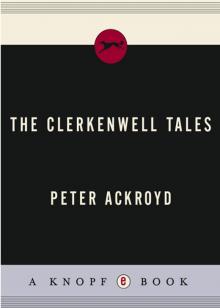 The Clerkenwell Tales
The Clerkenwell Tales The Canterbury Tales
The Canterbury Tales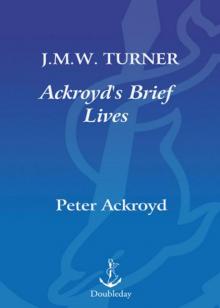 J. M. W. Turner
J. M. W. Turner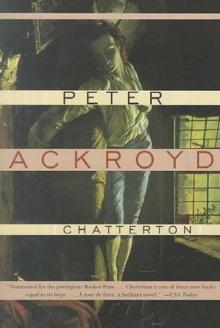 Chatterton
Chatterton The Canterbury Tales – A Retelling
The Canterbury Tales – A Retelling Alfred Hitchcock
Alfred Hitchcock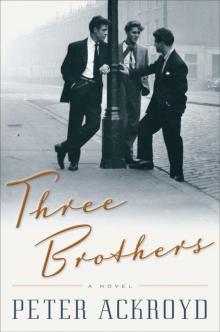 Three Brothers
Three Brothers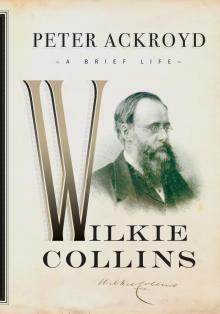 Wilkie Collins
Wilkie Collins Venice
Venice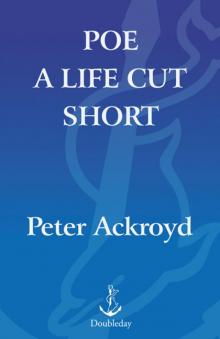 Poe
Poe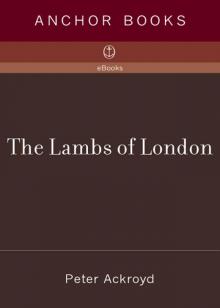 The Lambs of London
The Lambs of London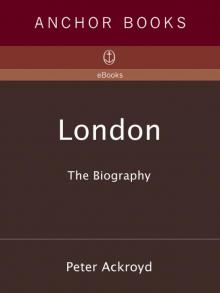 London
London Queer City
Queer City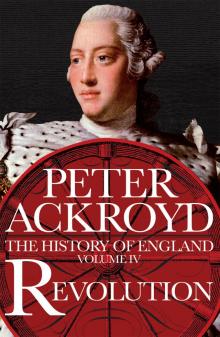 Revolution, a History of England, Volume 4
Revolution, a History of England, Volume 4 Venice: Pure City
Venice: Pure City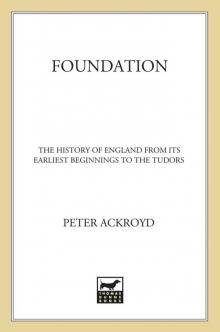 Foundation
Foundation Thames
Thames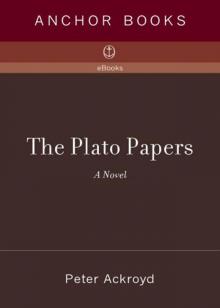 The Plato Papers
The Plato Papers The house of Doctor Dee
The house of Doctor Dee Rebellion: The History of England from James I to the Glorious Revolution
Rebellion: The History of England from James I to the Glorious Revolution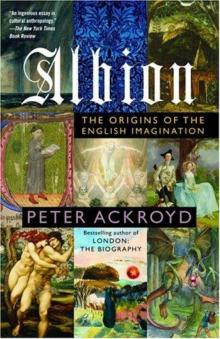 Albion: The Origins of the English Imagination
Albion: The Origins of the English Imagination The Fall of Troy
The Fall of Troy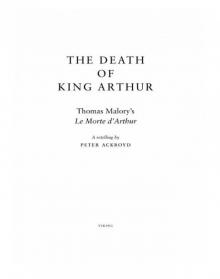 The Death of King Arthur
The Death of King Arthur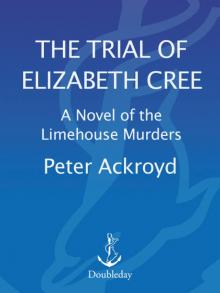 The Trial of Elizabeth Cree
The Trial of Elizabeth Cree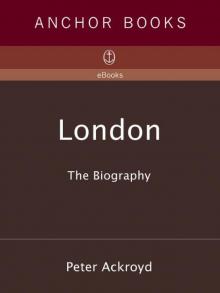 London: The Biography
London: The Biography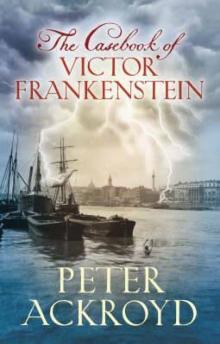 The Casebook of Victor Frankenstein
The Casebook of Victor Frankenstein Hawksmoor
Hawksmoor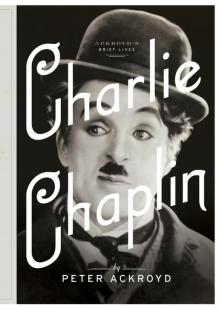 Charlie Chaplin
Charlie Chaplin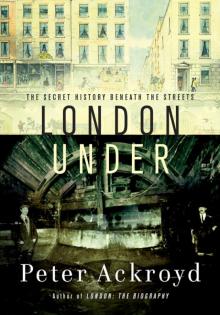 London Under
London Under